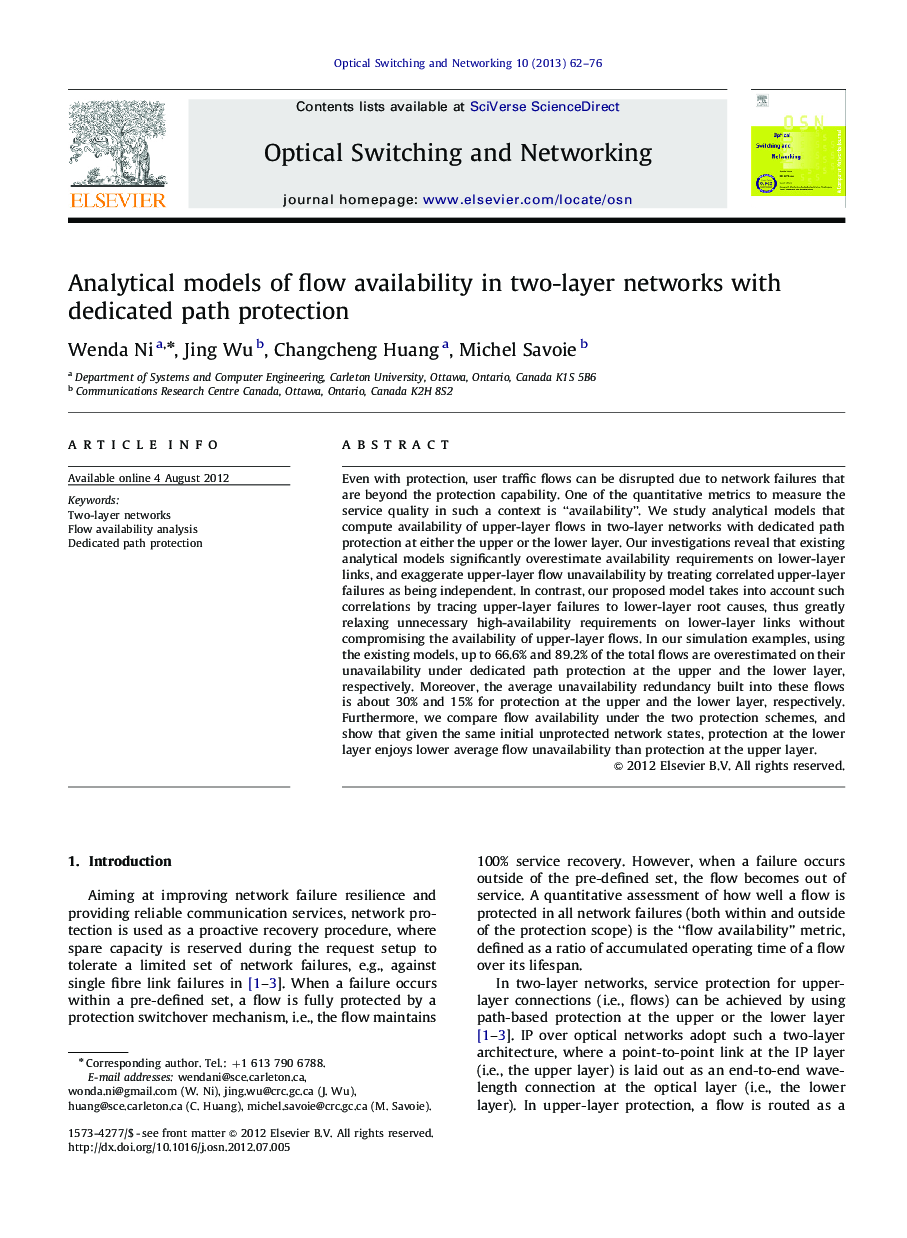| Article ID | Journal | Published Year | Pages | File Type |
|---|---|---|---|---|
| 464528 | Optical Switching and Networking | 2013 | 15 Pages |
Even with protection, user traffic flows can be disrupted due to network failures that are beyond the protection capability. One of the quantitative metrics to measure the service quality in such a context is “availability”. We study analytical models that compute availability of upper-layer flows in two-layer networks with dedicated path protection at either the upper or the lower layer. Our investigations reveal that existing analytical models significantly overestimate availability requirements on lower-layer links, and exaggerate upper-layer flow unavailability by treating correlated upper-layer failures as being independent. In contrast, our proposed model takes into account such correlations by tracing upper-layer failures to lower-layer root causes, thus greatly relaxing unnecessary high-availability requirements on lower-layer links without compromising the availability of upper-layer flows. In our simulation examples, using the existing models, up to 66.6% and 89.2% of the total flows are overestimated on their unavailability under dedicated path protection at the upper and the lower layer, respectively. Moreover, the average unavailability redundancy built into these flows is about 30% and 15% for protection at the upper and the lower layer, respectively. Furthermore, we compare flow availability under the two protection schemes, and show that given the same initial unprotected network states, protection at the lower layer enjoys lower average flow unavailability than protection at the upper layer.
